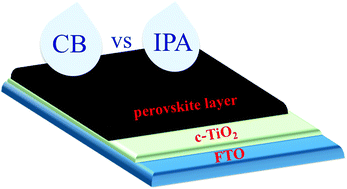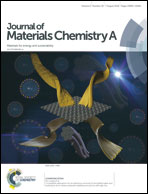Understanding the effect of chlorobenzene and isopropanol anti-solvent treatments on the recombination and interfacial charge accumulation in efficient planar perovskite solar cells†
Abstract
Organic–inorganic lead halide perovskites have emerged as very promising semiconductors with efficiencies exceeding 22% making them a serious candidate for next generation solar cells. All current high performance perovskite solar cells (PSCs), including the most recent world records, were achieved using the so-called anti-solvent method. Here, an anti-solvent, typically chlorobenzene (CB), is used to induce rapid crystallisation of a liquid perovskite precursor resulting in highly homogenous, pinhole-free planar perovskite films. While this has yielded very impressive high-performance results, few efforts have been dedicated to the fundamental understanding of the anti-solvent method. In this work, a systematic study is employed to understand the influence of anti-solvent treatment on both morphological and optoelectronic characteristics of PSCs. Perovskite absorber films were treated using CB and isopropanol (IPA) for comparing anti-solvents with different polarities. Scanning electron microscopy (SEM) and atomic force microscopy (AFM) show that IPA treated perovskite films have a more uniform morphology with larger grains in comparison to CB processed perovskite films. Despite the improved morphology and solar cell performance the devices with IPA treated perovskites suffer from higher hysteresis during current density–voltage (J–V) scans. We found that this enhanced hysteresis stems mainly from higher charge accumulation at the TiO2/perovskite interface under illumination that could also lead to formation of excess electrostatic potential contributing to an increased open circuit voltage (Voc). Our study provides a way for in-depth spectroscopic analysis methods aiding a deeper understanding of the interfacial charge characteristics and the fundamental mechanisms of PSCs.



 Please wait while we load your content...
Please wait while we load your content...